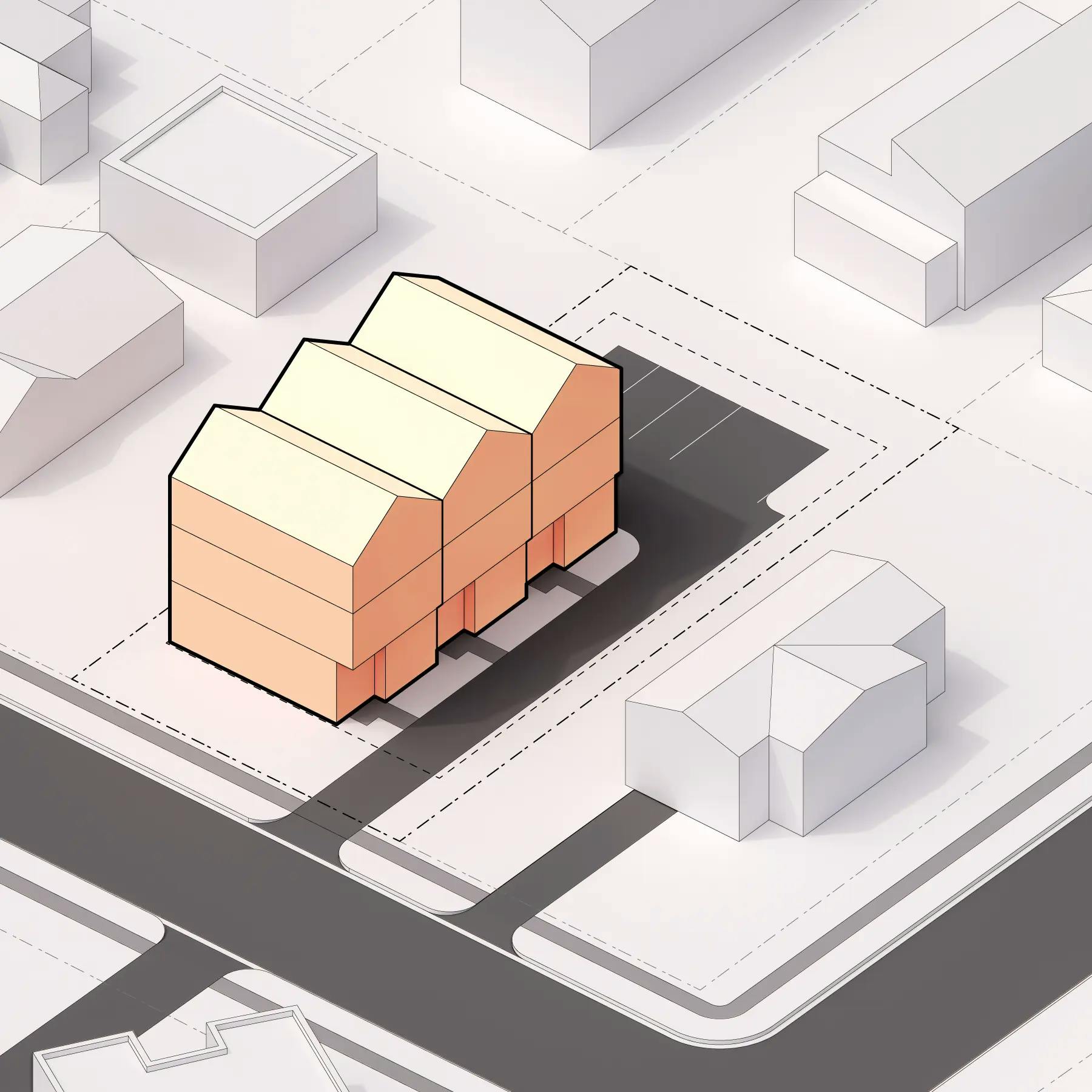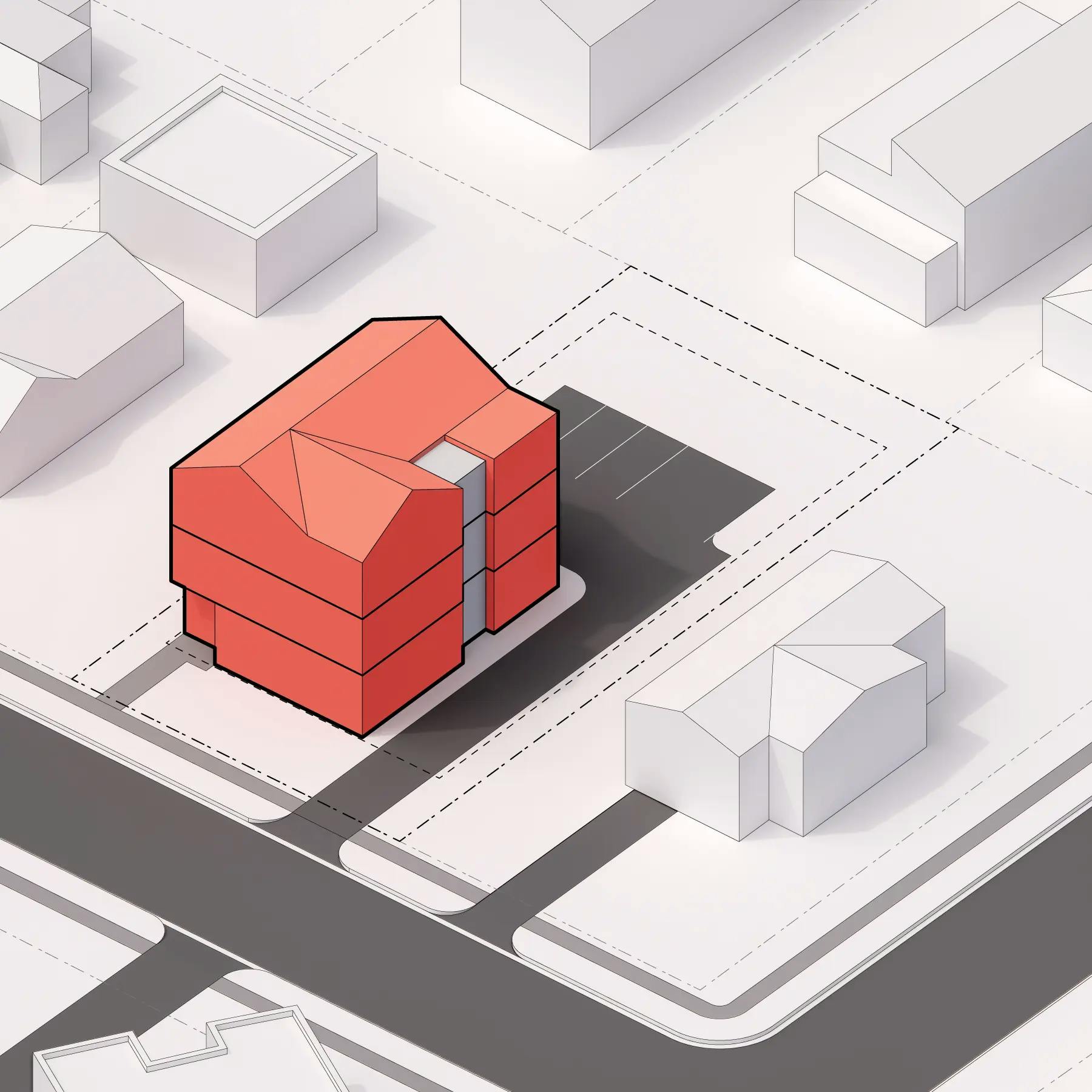Greetings from Cedar!
Welcome to the Arboretum, a biweekly newsletter for those at the frontier of urban infill development in Austin, TX and beyond. Every few weeks we explore (with you) the latest headlines in Austin's infill landscape (including City Council), as well as innovative strategies, and success stories that shape the way we envision, plan, and execute urban infill projects.
Table of contents
- HOME Phase II is here
- The "Ranchplex"
- The "Cottage court"
- The "Triple decker"
- Homes that "age in place"
- Using Cedar to underwrite HOME projects
HOME Phase II is here!
The HOME initiative is the most important set of reforms to Austin's land-development regulations in a half century. This past December, City Council completed the first phase, allowing for up to (3) homes on most single-family zoned parcels in the City. It now continues with Phase II of the HOME initiative, which proposes the following additional reforms:- Minimum lot size to be reduced to 2,000sf for (1) unit
- Increase impervious coverage maximum to 0.45 from 0.40 for SF-1 zoned lots
- Relax development standards for small lots, including minimum lot width
- Adjust flag lot requirements and reform subdivision process & review
The "Ranchplex"
Stacking units side-by-side, across one-and-a-half levels, allows the homes to keep a low-profile while providing easy drive access and generous side-yard outdoor space.

Townhome - Attached
Townhome - Attached
Townhome - Attached
FAR - 0.65Development criteriaFind matching sites from our catalog
here
Parcel area
8,448sf
Unit count
3
Parking count
3Garage
Gross Built Area | FAR
5,322sf0.63
Average unit size
1,774sf3 Bed
Impervious coverage
3,717sf0.44
The "Cottage court"
By planning across adjacent parcels, central gardens and open-space can be created through courtyards at that link six homes into one “missing-middle” scaled development.

Single-family residence
Single-family residence
Single-family residence
FAR - 0.65Development criteriaFind matching sites from our catalog
here
Parcel area
7,276sf
Unit count
3
Parking count
3Surface
Gross Built Area | FAR
4,656sf0.64
Average unit size
1,552sf3 Bed
Impervious coverage
3,274sf0.45
The "Triple decker"
By creating smaller (but still family-sized) units in a stacked arrangement that sets back the top unit, this approach can create generous terraces that match the scale of the neighborhood.

Stacked Triplex
Stacked Triplex
Stacked Triplex
FAR - 0.65Development criteriaFind matching sites from our catalog
here
Parcel area
6,648sf
Unit count
3
Parking count
3Surface
Gross Built Area | FAR
3,691sf0.56
Average unit size
1,230sf2 Bed
Impervious coverage
2,792sf0.42
Homes that "age in place"
Corner lots with homes that have historically defined the character of their neighborhoods can be preserved through HOME in a way that still allows for 2-3 units to be added in a manner that aligns with the “look and feel” of their neighbors.

Existing Structure
Townhome - Attached
Townhome - Attached
FAR - 0.65Development criteriaFind matching sites from our catalog
here
Parcel area
8,808sf
Unit count
3
Parking count
3Garage
Gross Built Area | FAR
2,860sf0.32
Average unit size
1,430sf3 Bed
Impervious coverage
3,964sf0.45
Using Cedar to underwrite HOME projects
Cedar helps you find, diligence, and analyze properties utilizing HOME. Sort and filter scenarios by key metrics like yield-on-cost, impervious cover compliance, gross floor area, construction type, and much more, to ensure you’re maximizing the potential of your project.
Cedar gives you the tools to maximize the development potential of HOME
Big policy changes can create incredibly positive outcomes, but that can be complicated and overwhelming at first - Cedar is here to help. We’re putting the tools in your hands to make sure you’re capturing the full opportunity of HOME, while minimizing risk, on any viable property in the City.Join our private beta for early access
Did we miss anything?
Let us know by sending a note to contact@cedar.buildCedar Platform
Subscribe to the Arboretum to stay up to date with every tree posted by Cedar